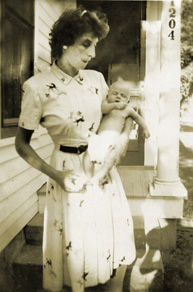When you are designing and laying out a 350 page book with 150+ photos [or even a 120 page book with 40 photos], you can easily become confused and be more prone to making errors unless you can go into what I call “factory mode”, where you need only concentrate on execution, not on solving problems.
Setting up a workflow is where you solve problems ahead of time. Workflow is simply the sequence of steps to follow to get your work done. In the context of this website, it’s the steps involved to combine a manuscript and photos into a printed and bound book. This sequence of steps will be pretty much the same from one print production project to the next. Once you work out solutions to the problems that inevitably arise in such projects, they become second nature. You know what to do at each stage of the project. And you’ll execute the same steps in the same sequence on subsequent projects. This is what I call “think once, execute many times.”
Another way to think about book design and production is to see it as a combination of
• creative work: that is, the book design itself,
• engineering: translating that design into master pages and styles, photo and layout workflow, etc.
• technical work: doing the actual page layout while learning all the shortcuts and best practices of your software and getting really fast with keyboard commands
• and clerical: keeping track of it all.
Workflow streamlines the engineering, technical and clerical parts of the project, giving you more time and energy to focus on the creative. And how would you prefer to spend your limited time: designing a knock ‘em dead cover or searching for the image file which has been misplaced?
Some of the advantages of establishing a print production workflow are:
• increased efficiency, which translates directly into increased profitability
• a reduced chance of making stupid errors and when [not if] you do, a good workflow will alert you so you can correct them sooner rather than later
• if it is necessary to deviate from your established workflow, there’s a framework in place to prevent you from getting too far off track,
• and, when you are tired, you can still accomplish a great deal of work because the more consistently you follow the workflow steps, the more effortless your technical skills become.
I’m on a mission to convince personal historians and graphic designers to develop and follow a workflow system for book design and production. I’ll be writing a lot more about this in the coming weeks and sharing details of the workflow I’ve developed in my 20 [ahem. oh, okay!] close to 30 years of experience.
Related posts:
No other posts right now, but you might be interested in the upcoming teleclasses I’ll be offering on workflow where we’ll be identifying the distinct phases involved in transforming a manuscript into a privately published book and seeing where the most common trouble spots are.











7 Trackbacks
[…] Continued here: what is workflow? and who cares, anyway? – Shoebox Stories […]
[…] what is workflow? and who cares anyway? […]
[…] you might be interested in this related posts: what is workflow? and who cares anyway? as well as the upcoming teleclass I’ll be offering on the topic. This entry was written by […]
[…] what is workflow? and who cares anyway? […]
[…] what is workflow? and who cares anyway? […]
[…] what is workflow? and who cares anyway? Thinking about [profitable] book design & production This entry was written by cj-madigan, posted on January 28, 2011 at 4:10 pm, filed under Book Thinking, Design Business, Personal History, Process/Workflow, Uncategorized. Bookmark the permalink. Follow any comments here with the RSS feed for this post. Post a comment or leave a trackback: Trackback URL. . View the archives for more. […]
[…] what is workflow and who cares anyway? […]